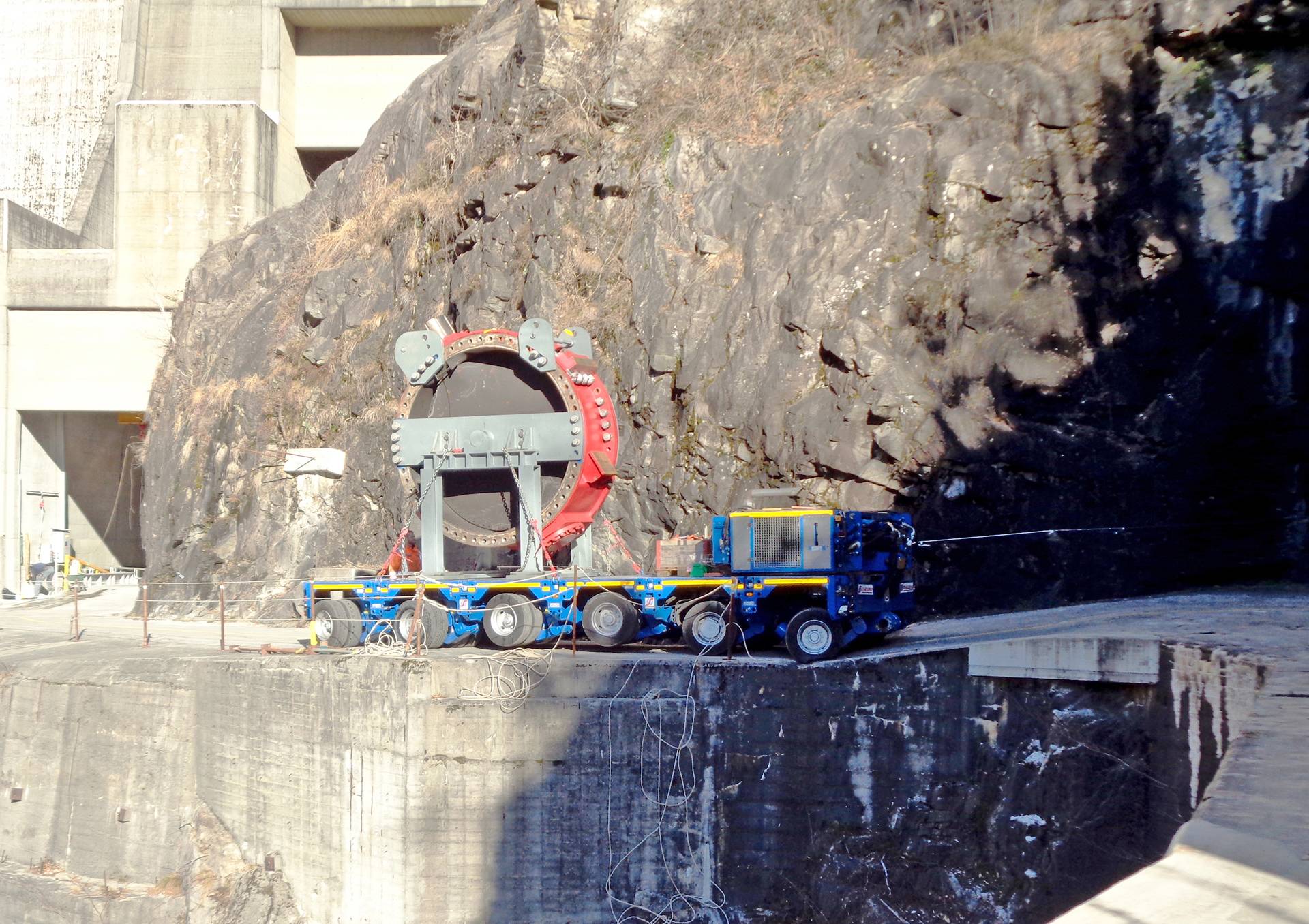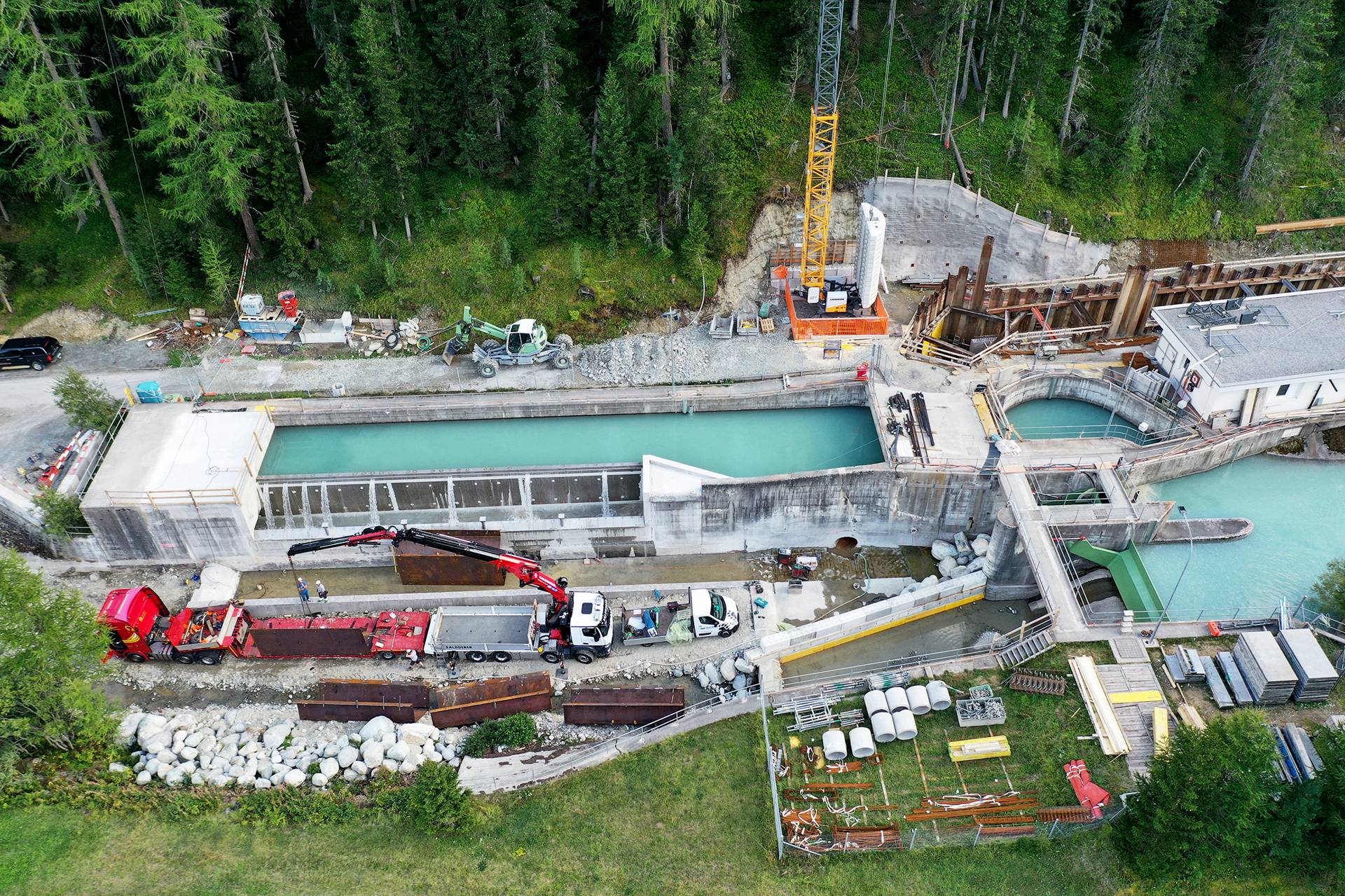The Voith Streamdiver – versatile, environmentally-friendly, robust and affortable solution for the low-head segment9 min read
Lesedauer: 6 MinutenIn 2009, VOITH cooperated with Verbund, the Austrian energy provider, on the development of the StreamDiver, now a well-established solution for the hydropower market.
What has made it so special was the concept of standardised sizing from the very beginning. VOITH’s patented technology was created according to the credo: ‘Minimise complexity – minimise breakdowns’ – keep investment and running costs low.
Although hydroelectric power accounts for the largest single share of world’s renewable energy production, there is still plenty of unexploited potential in the concept of small-scale hydropower plants. Previously, this means of generating electricity was considered commercially unviable. Since the market launch of the StreamDiver, Voith has delivered 31 machines to satisfied customers in eight countries. Where conventional turbines are no longer considered profitable, Voith’s technology can be used in the form of a compact propeller turbine. StreamDiver is an almost silent and invisible power plant that requires a minimum of construction logistics. As well as being environmentally friendly, and easy to install – so it can be retrofitted into existing transverse structures, in contrast to other machines the StreamDiver also offers the benefit of long maintenance intervals of over ten years.
HORIZONTAL PROPELLER TURBINES FOR LOW HEADS
Voith offers five standard modules and two XL modules for heads of 2-8 metres and flow rates of 2-12 cubic metres per second. In order to select the best solution and the ideal number of turbines it is necessary to consider the conditions in which the set-up will be working, the annual flow rate, head range, and the various physical restrictions on site. Ultimately, the overall size of the StreamDiver depends on the module chosen and the minimal water depth below the surface. Voith offers four predefined installation scenarios: a standard solution with a tapered inlet and a conventional rake system, a compact shaft hydropower plant with upright or horizontally-mounted turbines – according to requirements, a completely vertical solution, and an in-pipe variant for integrating StreamDiver into enclosed pipe systems. Over the previous year, the StreamDiver portfolio was expanded to allow full exploitation of the potential of this technology. In addition to the basic version with static guide vanes already established on the market, the following range of turbines is now available:
- StreamDiver RV is equipped with electrically adjustable guide vanes and a rotation speed regulator, allowing flexibility in adapting to the volume and speed of water available.
- StreamDiver RVT is designed to be installed vertically with a positive setting. As with the StreamDiver RV, it’s equipped with electrically adjustable guide vanes and a rotation speed regulator. It is mostly used for shaft hydropower plants.
- StreamDiver HP is fitted with adapted hydraulics and fortified water-lubricated bearings. This enables the head – and consequently power generation – to be increased without expanding overall construction size.
- StreamDiver iP can be built into a pipe, making it the ideal solution for syphon-type applications.
All of these options were optimised hydraulically for enhanced efficiency and even greater exploitation of sub-max flows.
REDUCED COST OF INVESTMENT – SUPERIOR QUALITY
The developments of the last few years have led to such an improvement that the StreamDiver can now achieve an annual power output on the scale of a conventional, double-regulated turbine. Furthermore, the StreamDiver offers major benefits in terms of the cost of investment – and particularly regarding related construction costs. When compared to conven- tional solutions, the StreamDiver enables projects to be implemented significantly more affordably in view of the savings on concrete, construction and excavation work. Comparisons between the StreamDiver and conventional machine layouts show that the installation of the StreamDiver significantly reduces the need for deep foundations and complex concrete geometry. This can lead to savings of more than 50% in terms of volume of concrete required for the power house. Projects can be implemented with simpler excavation tasks and within existing standard layouts. Consequently, planning and adaption of the projects can be completed rapidly. The turbine itself is an underwater propeller turbine, so neither the rotor blades or guide vanes move. In turn, this eradicates the necessity of a visible or accessible machine room. A space-saving e-container is sufficient to house the electronics infrastructure for operational regulation, and operational data can be monitored via sensors. There are gauges for temperature, water capacity levels and vibrations, as well as feedback on the condition of the bearings. The entire control infrastructure was manufactured by Voith for completely remotely-controlled operation. Together, these innovations can reduce overall project costs by up to 25%.
OIL-FREE BEARINGS – ECOLOGICALLY WISE AND ECONOMICALLY CLEVER
Voith’s patented, process water-lubricated, 100% oil-free bearings ensure these machines guarantee zero emissions. The bearings have been optimised to the point where uninterrupted operation and sustained durability can be guaranteed for several years. After collecting a wide range of data, a wealth of experience from years of operation and numerous in-situ tests, it was possible to optimise the bearing and guarantee many years of uninterrupted operation. Synthetic bearing coatings and cups with high-strength friction surfaces were constructed according to the hard-and-soft pairing principle. The service interval for the highly durable water-lubricated bearings is over 10 years. The main intervals at which the slide bearing modules need to be replaced depend upon the degree of machine stress, discharge head, total operating time, and the quality of the water.
ECOLOGICAL DESIGN
Primary fish safety is ensured by the fish-friendly shape of the runners and a fine rake with 20 – 35 mm gaps between the bars. The angle of approach has been optimised at 20° for a suitable flow velocity, even for smaller fish, to avoid flushing them through too forcibly. A bypass basin allows fish to access the water below without any further detours. One study showed that the system ensured a wide variety of fish species were prevented from swimming into the turbine. The deeper position of the turbine infrastructure ensure aesthetic and acoustic impairments are minimised.
KAPLAN-PIT TURBINE VERSUS STREAMDIVER
The drawing on page 13 clearly details the layout differences between the pit turbine and Voith StreamDiver solutions. Twelve StreamDiver units can replace three pit turbines. Moreover, the goal of an uncomplicated and affordable plant is particularly well served as regards circumvention of a powerhouse and the construction work it would entail. Not only is there no necessity to build a powerhouse, less excavation volume and depth are required for the installation of infrastructure. In fact, the volume of earth to be excavated is reduced by a whole 50% compared with a Kaplan pit turbine. It is important to bear in mind the significant reduction in the time required to construct and install the plant. In the case of this comparison, there was a time saving of approximately four months – equating to four months of additional operational benefits. A choice of one of the seven standard sizes offered by Voith means turbine delivery times are far shorter than for bespoke solutions.
UTILISING EXISTING POTENTIAL – THE SERAYU RIVER PLANT
The StreamDiver is far more than just a good choice for new hydropower plants. It was devised to be a retrofit solution for existing river dams. Its versatility makes it easy to integrate into existing transverse structures and offers excellent opportunities to exploit hydropower potential without immense capital outlay.
This system application offers the added advantage of cutting out the hazards of machine damage due to failed sealings, and of water pollution. A StreamDiver project is currently being implemented on the Serayu river in Indonesia, and provides an excellent example of how unique and versatile this solution is. The dam was installed to feed an irrigation channel in the mid-1990s. The small-scale hydropower plant is being built as part of the modernisation process. The project planners’ remit was to install a solution that required the least possible change to the current concrete structure and the concomitant maximum flow rate. In fact, the scope of installation and servicing activity was also to adhere to the restrictions of the present infrastructure wherever possible. Each of the two left-hand weirs is being fitted with 3 StreamDivers, requiring just a small change to the present structure and the retrofitting of an additional radial gate. The changes will allow a head of 7.5 metres to be harnessed to generate approximately 770 kilowatts.
FLEXIBLE AND UNCOMPLICATED ASSEMBLY, INSTALLATION AND SERVICE
The StreamDiver enables the requisite building work to be reduced to a minimum. Installation of the unit will take place in the water and only the power cable will remain accessible. The entire power train consists of the turbine, shaft, bearing and the generator in tube turbine housing. The premise is that ‘less complexity equates to greater reliability’ is confirmed in particular by the following concrete observations: The machine operates completely without oil or grease, is purely designed to process works water and is lubricated exclusively by the latter. Consequently, there can be no machine damage due to seal failures, nor can the water be polluted in any way. Actuators for the shut-off valve or rack and pinion can be remove en bloc for servicing at intervals similar to those applicable to the StreamDiver. A handful of optimised sensors constantly monitor the operational status of the machinery and the degree of wear in the bearings, thus eliminating unscheduled downtime breaks. In comparison to conventional turbines, the reduced complexity of the StreamDiver system ensures inspection intervals can be reliably scheduled once every five years, and maintenance expenditure can be cut by more than half. Simple machine mountings and underwater plugs allow machine units to be removed in a matter of minutes. As an option, the plant can be fitted with a lift and recovery system (LARS) enabling the machinery to be uninstalled under water and subsequently lifted out. Voith’s main service visits are scheduled at an interval of ten years. Within three days bearings, sensors and sealings are replaced, and cables and connectors inspected – on request the electric motor, too. The service costs for the StreamDiver are around 55% lower than for a conventional Kaplan bulb turbine.
NOGUIERA – AN INNOVATIVE SMALL-SCALE HYDROPOWER PLANT IN BRAZIL
The river in Parana, Brazil naturally drops in Noguaira, and Energias Renováveis MAZP decided to exploit this opportunity for a modern small-scale hydropower plant. The choice was made in favour of the Voith StreamDiver due to the enhanced cost efficiency in comparison with conventional Kaplan turbines, and due to the excellent level of environmental friendliness that came with the plant concept. The oil-free bearings and fish-friendly design were major reasons for this selection, since they also enhanced the probability of receiving the official authorisation required to proceed. The project was completed three weeks ago and a head of 8.20 metres now enables seven StreamDivers to generate around five megawatts.
Share:


